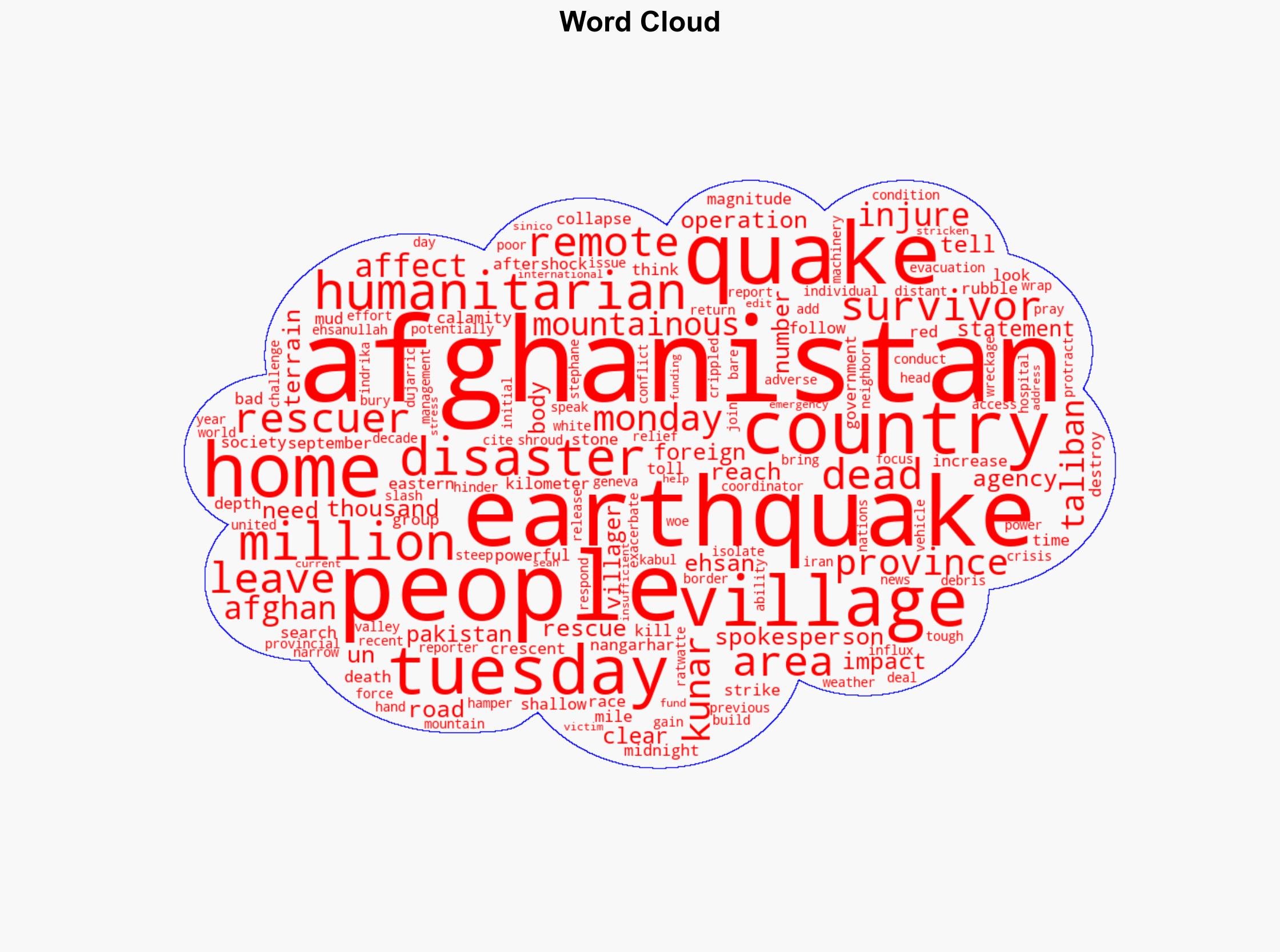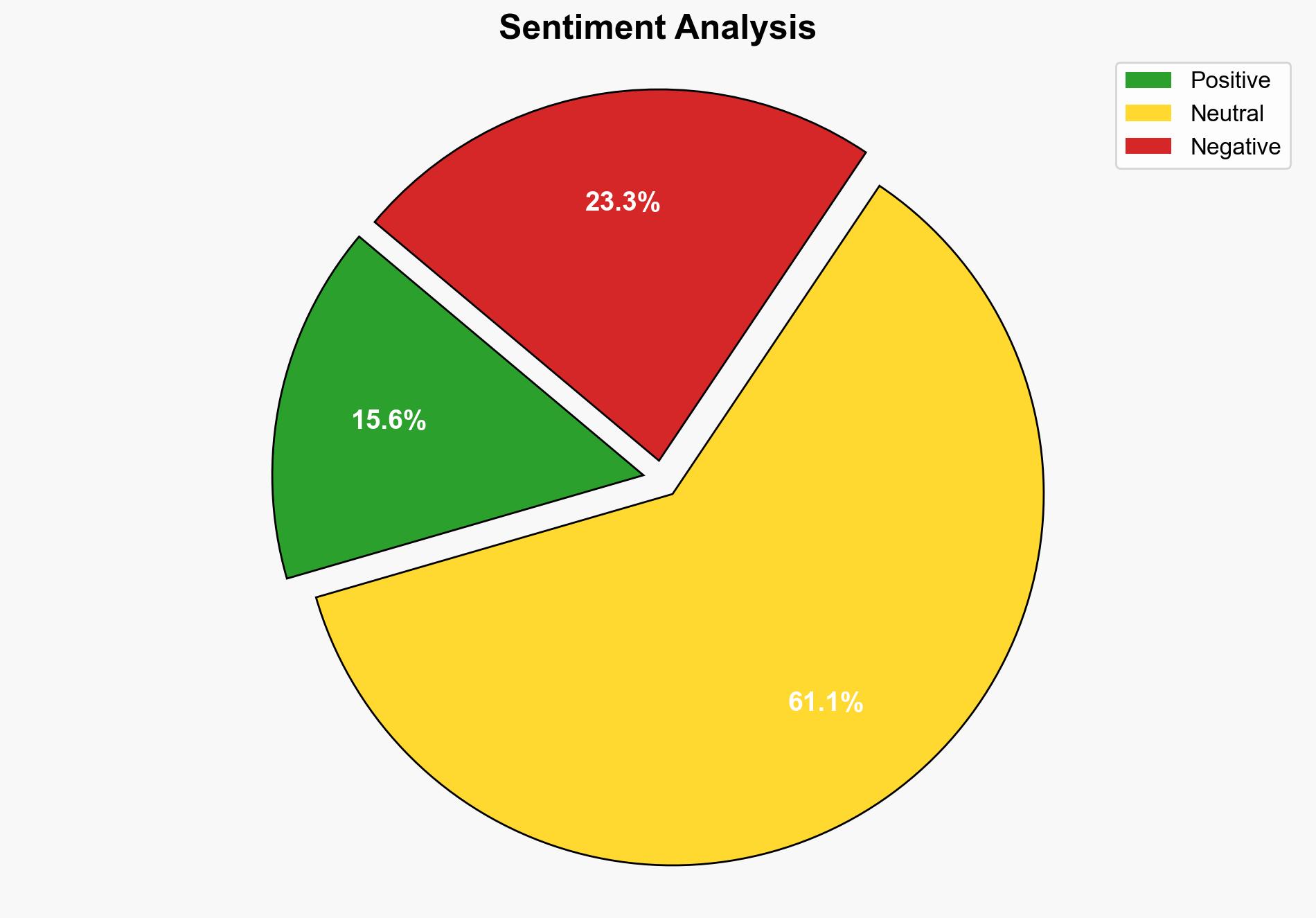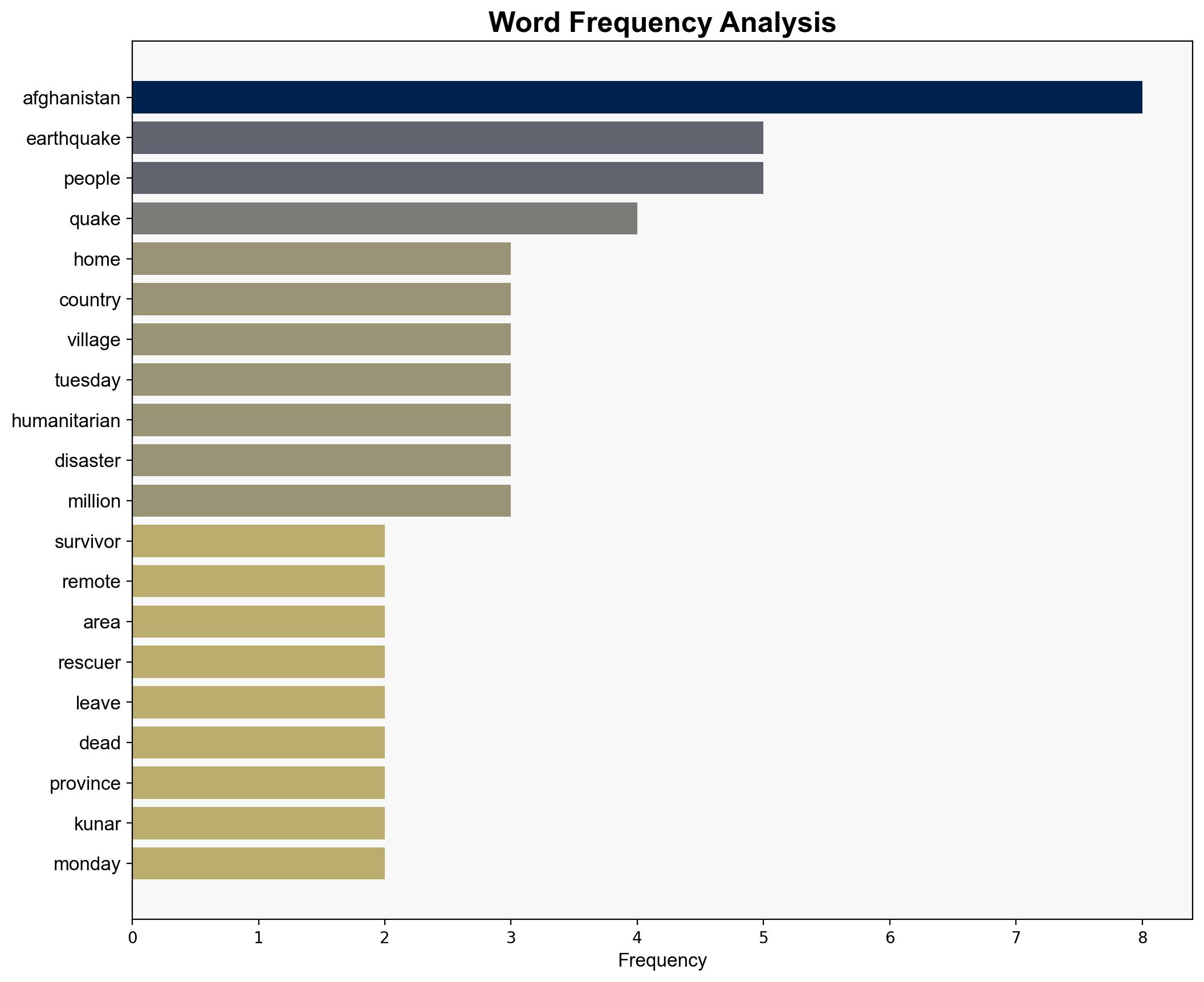Afghanistan earthquake Search on for survivors in remote areas – DW (English)
Published on: 2025-09-02
Intelligence Report: Afghanistan earthquake Search on for survivors in remote areas – DW (English)
1. BLUF (Bottom Line Up Front)
The most supported hypothesis suggests that the Afghan government’s response to the earthquake is severely hindered by logistical challenges and limited resources, exacerbated by ongoing political instability. Confidence level: Moderate. Recommended action: Increase international humanitarian aid and logistical support to improve disaster response capabilities.
2. Competing Hypotheses
1. **Hypothesis A**: The Afghan government, despite limited resources, is effectively managing the earthquake response, focusing on reaching remote areas and coordinating with international bodies for aid.
2. **Hypothesis B**: The Afghan government’s response is inadequate due to logistical challenges, political instability, and insufficient international support, leading to a slow and ineffective disaster relief effort.
Using ACH 2.0, Hypothesis B is better supported due to evidence of hampered rescue operations, difficult terrain, and reports of inadequate humanitarian funding.
3. Key Assumptions and Red Flags
– Assumption: The Afghan government has the capacity to manage disaster response effectively despite political instability.
– Red Flag: Reports of inadequate funding and logistical challenges suggest potential overestimation of the government’s capabilities.
– Blind Spot: Limited information on the Taliban’s internal coordination and resource allocation for disaster relief.
4. Implications and Strategic Risks
The inadequate response could exacerbate humanitarian crises, leading to increased displacement and regional instability. The situation may strain international relations if aid is perceived as insufficient or mismanaged. There is a risk of escalating tensions with neighboring countries if cross-border aid is delayed or obstructed.
5. Recommendations and Outlook
- Immediate action: Mobilize international aid and logistical support to facilitate access to remote areas.
- Short-term: Establish a coordinated international task force to streamline aid delivery and resource allocation.
- Long-term: Develop a comprehensive disaster response strategy with regional partners to enhance resilience against future calamities.
- Scenario Projections:
- Best: Effective international collaboration leads to rapid relief and stabilization.
- Worst: Continued inadequate response results in a prolonged humanitarian crisis and regional instability.
- Most Likely: Gradual improvement in relief efforts with increased international aid, but challenges persist due to political instability.
6. Key Individuals and Entities
– Ehsanullah Ehsan: Provincial head of disaster management.
– Indrika Ratwatte: UN humanitarian coordinator for Afghanistan.
– Stephane Dujarric: UN spokesperson.
7. Thematic Tags
national security threats, humanitarian aid, regional focus, disaster response





